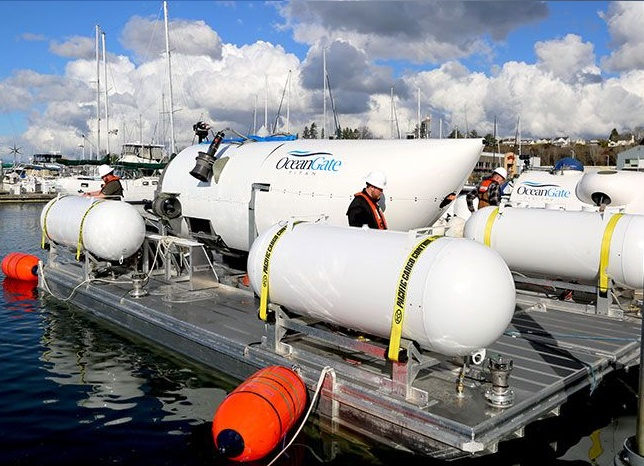Oceangate Titanic submersible : Utter disregard for safety standards
The ill-fated Titanic submersible that dominated headlines at the end of June has come under scrutiny in a devastating ’60 Minutes Australia’ investigation.
The Titan submersible, operated by Oceangate co-founder and CEO Stockton Rush, carried four tourists who had paid to witness the sunken wreckage of the legendary Titanic.

However, the tragic turn of events has shed light on shocking details and raised concerns about the safety measures and decision-making surrounding the expedition.
According to Carl Stanley, a tourist submarine operator and friend of Rush, there were early indications of trouble.
Stanley had experienced a test dive on the Titan in 2019 and vividly described his concerns. He reported hearing loud gunshot-like noises every few minutes during the dive, which he believed were related to the carbon-fiber hull.

Stanley raised the alarm about the potential risks, but his concerns were dismissed, leading to heated exchanges with Rush.
Stanley also questioned Rush’s operating experience and claimed that he had a disregard for safety.
Rob McCallum, who led a Titanic submersible expedition in the early 2000s, highlighted a disturbing trend within OceanGate’s operations.

According to McCallum, safety concerns raised by individuals were not only ignored but also silenced. This toxic culture of disregarding safety, contrary to standard maritime practices, is deeply concerning and contributed to the tragic outcome.
Stanley’s belief that the loud noises he heard during his test dive were related to the carbon-fiber hull gained significance.
The Titan was the only commercial submersible made of carbon fiber, a material considered too lightweight to withstand extreme pressures at great ocean depths.

Despite concerns from sub-engineers, Rush insisted on using carbon fiber to accommodate more passengers on the Titan.
Stanley strongly believes that the carbon-fiber tube was the mechanical part that failed, leading to the implosion of the Titan during its final expedition.
Years before the tragic incident, the submersible community expressed distress over Rush’s disregard for safety standards.
Warnings were issued to OceanGate, but they were ignored, and those who voiced concerns were silenced.
David Lochridge, the company’s chief pilot, faced termination and legal action after raising multiple safety concerns. The lack of action in response to these warnings and the suppression of dissenting voices created an environment conducive to catastrophe.
On the third deep-sea expedition to the Titanic shipwreck, the OceanGate sub, named Titan, embarked on a journey with renowned Titanic expert Paul-Henri Nargeolet, billionaire explorer Hamish Harding, Pakistani businessman Shahzada Dawood, his teenage son Suleman, and OceanGate CEO Stockton Rush. The planned eight-hour journey, including a descent of two and a half hours to the ocean floor, ended in tragedy.

Carl Stanley’s statement that Rush had a death wish stirred controversy.
Stanley believed that Rush risked his life and the lives of his customers to achieve fame and notoriety. However, Guillermo Söhnlein, co-founder of OceanGate, characterized Rush as “risk-averse” and defended the company’s actions.
The divergent opinions on Rush’s intentions raise questions about his motivations and decision-making.

If the Titanic represented the ultimate lesson in human hubris, the Titan submersible became its tragic epilogue.
The ill-fated expedition cast a shadow on the submersible industry and prompted reflections on the balance between exploration, safety, and responsible decision-making.


